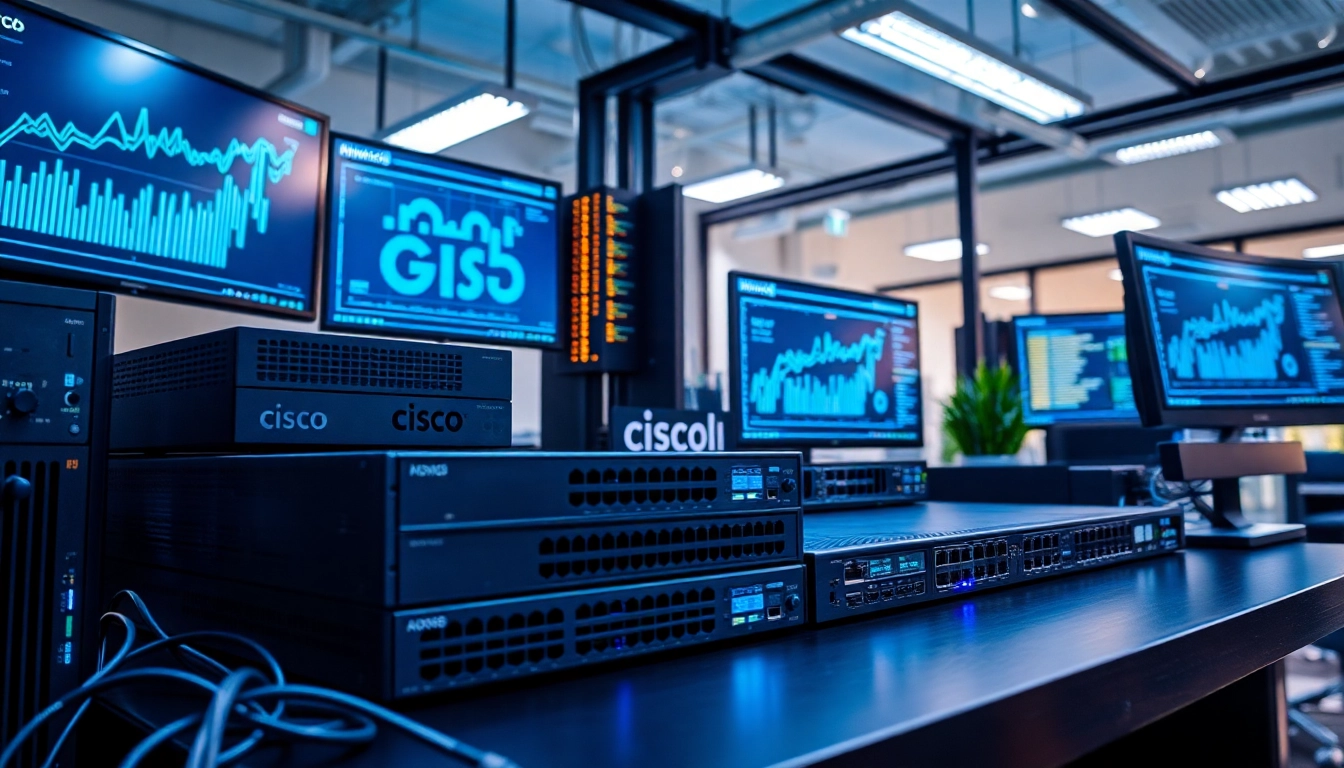Introduction to Cisco Networking Solutions
Cisco has become synonymous with networking innovation, capturing the essence of digital communication technologies that our modern world relies on. As organizations increasingly turn to digital solutions, Cisco stands at the forefront, offering a range of products, services, and technologies designed to enhance connectivity, security, and efficiency in business operations. This article delves into the core aspects of Cisco’s networking solutions, exploring their significance, technology backbone, educational opportunities, and vision for the future.
Overview of Cisco
Founded in the mid-1980s, Cisco has evolved from a small innovative startup into a leading player in the global network technology market. Headquartered in San Jose, California, the company specializes in manufacturing networking hardware, telecommunications equipment, and high-technology services and products. With a commitment to empowering businesses to connect with their customers seamlessly, Cisco delivers end-to-end solutions that integrate seamlessly into the digital landscape.
Importance of Networking in Modern Business
Networking has become a cornerstone of modern business operations; it enables seamless communication, collaboration, and data exchange. In an era defined by remote work and digital transformation, organizations depend on robust networking solutions to maintain productivity and competitiveness.
The ability to connect centrally through data centers, cloud environments, and mobile networks is critical for operational efficiency. A reliable network supports essential functions ranging from business communication to customer relationship management, making it a vital component for success in various industries.
Key Innovations from Cisco
Cisco’s continued advancement in networking solutions has led to significant innovations that shape the industry. The company has introduced transformative technologies, such as:
- Software-Defined Networking (SDN): A solution that allows administrators to manage network services through abstraction of lower-level functionality.
- Internet of Things (IoT): Cisco has pioneered approaches to connect and secure IoT devices, enabling smart cities and connected environments.
- Cloud Integration: Solutions that facilitate seamless interactions between on-premise systems and cloud-based resources.
Cisco’s Core Networking Technologies
Routers and Switches Explained
At the heart of Cisco’s networking solutions are routers and switches, which play crucial roles in directing data packets and managing traffic within networks.
Routers determine the best paths for data packets on the internet, facilitating communication between different networks. Cisco routers integrate advanced features such as traffic management, routing protocols, and enhanced security settings.
Switches, on the other hand, connect devices within a local area network (LAN) and manage data traffic effectively. Cisco provides a variety of switches optimized for performance, scalability, and security, ensuring that organizations can expand their networks efficiently.
Cisco’s Security Solutions
In today’s digital landscape, security is paramount. Cisco offers a comprehensive suite of security solutions designed to protect an organization’s data and infrastructure from cyber threats.
Key offerings include:
- Cisco Umbrella: A cloud-delivered security service that provides protection against online threats before they reach the network.
- Cisco Firepower: A next-generation firewall that integrates advanced threat protection (ATP) and intrusion prevention systems (IPS).
- Cisco Identity Services Engine (ISE): Centralizes identity-based security policy management across the network.
Cloud Networking with Cisco
With the rise of cloud computing, the need for cloud networking solutions has never been greater. Cisco’s approach to cloud networking focuses on seamless connectivity, security, and scalability.
The Cisco Cloud Services portfolio provides businesses with the tools necessary to integrate public, private, and hybrid cloud environments while maintaining optimal performance and security. Key services include:
- Cisco Application Centric Infrastructure (ACI): An architecture designed for data centers that ensures faster application deployment while optimizing resources.
- Cisco Meraki: A cloud-based networking solution that allows businesses to manage their networks through a centralized dashboard effortlessly.
Learning and Certification Opportunities with Cisco
Cisco’s Networking Academy Overview
Understanding that the future of networking depends on well-trained professionals, Cisco established the Networking Academy. This program has educated millions of learners across the globe, offering a robust curriculum that equips students with vital networking skills ranging from basic networking concepts to advanced cybersecurity.
The Networking Academy fosters partnerships with educational institutions, allowing local communities to gain access to industry-relevant training that prepares them for employment in the technology sector.
Available Certifications and Their Benefits
Cisco offers a comprehensive range of certifications tailored to different skill levels and professional roles, creating pathways for career advancement in the field of networking. Notable certifications include:
- Cisco Certified Network Associate (CCNA): A foundational certification that covers the essential networking concepts, including IP addressing, security fundamentals, and network access.
- Cisco Certified Network Professional (CCNP): An advanced certification that dives deeper into networking skills, such as troubleshooting and optimizing networks.
- Cisco Certified Internetwork Expert (CCIE): Recognized globally as one of the most prestigious certifications, CCIE emphasizes deep networking expertise in various technologies.
These certifications enhance job prospects and provide a competitive edge in the IT job market, showcasing a professional’s dedication to ongoing learning and expertise in networking technologies.
Pathways for Career Development
Cisco’s operational framework and educational offerings create diverse pathways for career development. Starting from the grassroots level with certifications such as CCNA, individuals can progress to specialized areas in networking, cybersecurity, and cloud. Additionally, Cisco collaborates with various organizations to enhance its curriculum, ensuring that it meets current industry demands.
Many graduates of Cisco’s Networking Academy have successfully transitioned into roles such as network engineers, security analysts, and cloud architects, underscoring the program’s efficacy in shaping the next generation of networking professionals.
Implementing Cisco Solutions in Organizations
Best Practices for Integration
Successful implementation of Cisco solutions requires strategic planning and a clear understanding of an organization’s specific needs. Here are best practices for integrating Cisco technologies into business operations:
- Conduct an Assessment: Evaluate the current network infrastructure, identifying gaps and areas for improvement.
- Develop a Roadmap: Outline a clear strategy for implementation, including timelines, resource allocation, and key milestones.
- Engage Stakeholders: Involve IT teams, management, and end-users to ensure a smooth transition and address any concerns.
Real-World Case Studies
Organizations across various sectors have leveraged Cisco’s solutions to enhance their operational capabilities. Here are examples of successful implementations:
- Healthcare Sector: A leading hospital network adopted Cisco’s telehealth solutions to facilitate remote consultations, improving patient access to healthcare services while ensuring data security.
- Education Sector: A university utilized Cisco’s networking technology to enhance remote learning experiences for students, enabling seamless online classes and collaborative tools.
- Manufacturing Sector: A manufacturing firm implemented Cisco’s IoT solutions to monitor equipment health in real time, reducing downtime and improving production efficiency.
Measuring Performance and Results
To maximize investment in Cisco solutions, organizations must establish performance metrics to evaluate their effectiveness. Common KPIs include:
- Network Uptime: Monitoring the reliability of network services to ensure business continuity.
- Data Breach Incidents: Measuring the success of implemented security measures by tracking vulnerabilities and incidents.
- Employee Productivity: Assessing improvements in workflow and collaboration facilitated by new networking solutions.
Regularly reviewing these metrics provides valuable insights for continuous improvement and helps in optimizing network performance.
The Future of Cisco and Networking
Emerging Trends and Technologies
The networking landscape is rapidly evolving, and Cisco is positioned to lead the charge in adopting emerging technologies that reshape communication and connectivity. Key trends include:
- 5G Networking: The rollout of 5G technology will dramatically boost network speeds and reduce latency, enabling more robust applications for businesses.
- Artificial Intelligence: The integration of AI into networking strategies enhances automation, improving responsiveness to network anomalies.
- Edge Computing: Decentralized data processing at the edge of networks provides quicker data insights and reduces bandwidth for cloud storage.
The Role of AI and Automation
As organizations increasingly embrace AI, Cisco’s role in integrating intelligent systems into networking becomes evident. AI technologies can analyze network data, predict issues before they escalate, and automate maintenance processes, fostering enhanced operational efficiency. Automation extends to security measures, where AI can detect and mitigate threats in real time, thereby enhancing organizational resilience.
Predictions for Cisco in the Tech Space
Looking ahead, Cisco is likely to continue innovating and expanding its offerings in response to market demands. Predictions include:
- Greater investments in cybersecurity solutions to combat increasing cyber threats.
- Expansion of cloud services to meet the needs of hybrid work environments.
- Continual partnerships with educational institutions to bridge the skills gap in the tech workforce.
With a strategic focus on emerging technologies and dedication to education, Cisco is poised to remain a pivotal player shaping the future of networking.















Leave a Reply